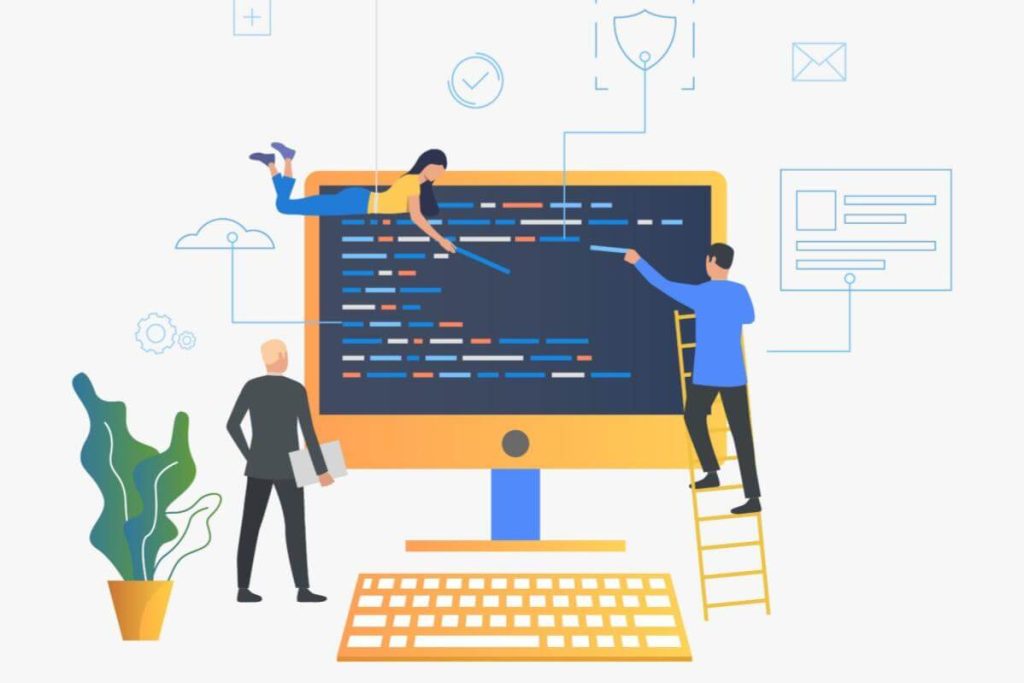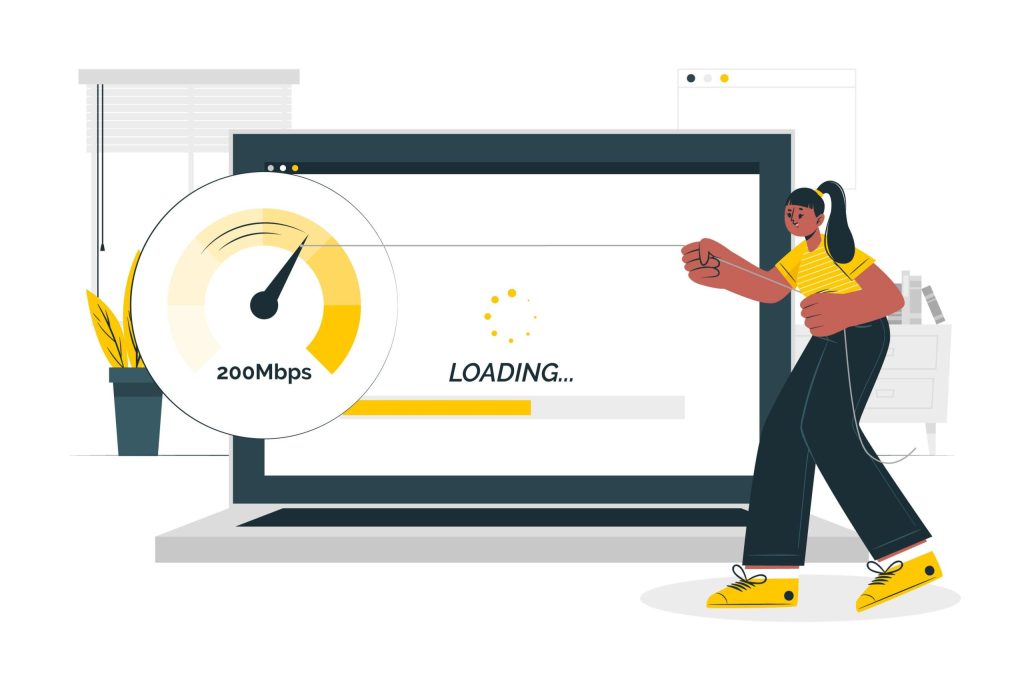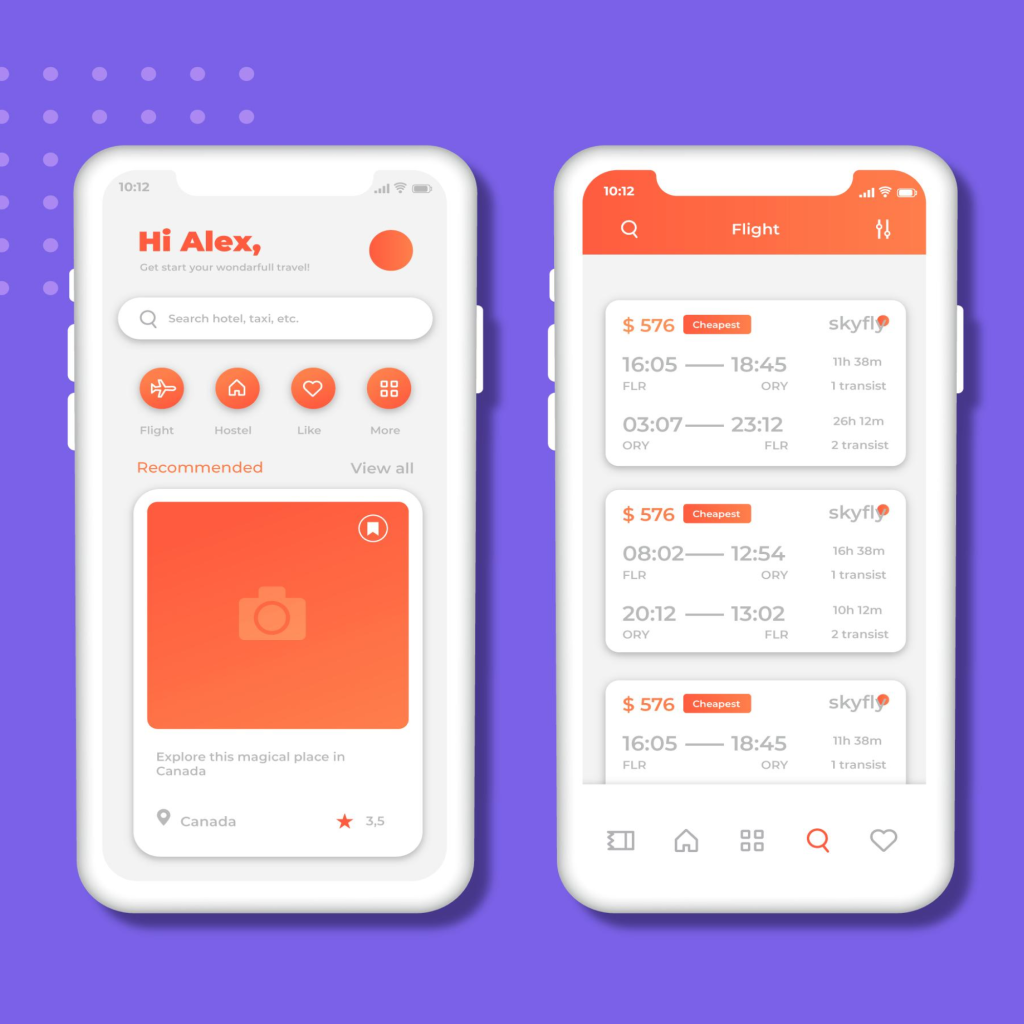What is Web Design?
The process of generating and designing websites is known as web design. It entails organising and carrying out a website’s structure, layout and content to make it aesthetically pleasing, easy to navigate, and useful. To construct an online presence that complements the objectives and brand identity of the client, web designers use a wide range of resources, including photos, text, graphics, and multimedia.
Technical and creative abilities, such as an understanding of HTML, CSS, and JavaScript and a sense of design, typography, and colour theory, are needed for web design. A well-designed website may attract users, enhance user experience, and lead to commercial success.
What are the Types of Web Design?

There are various kinds of website design, each possessing their own certain qualities and objectives. Based on the requirements of the business, the intended audience, and the goal of the website, a knowledgeable web designer will select the appropriate design style. Here we have listed the top website designs.
Minimalist Website Design
Negative space, a small colour palette, and straightforward typography are frequently used in minimalist design to produce a streamlined and uncluttered appearance. With few design elements and pieces of content, this style of web design emphasises simplicity.
Flat Website Design
To produce a minimalistic design, this design aesthetic uses straightforward, uncomplicated features like strong text, vivid colours, and straightforward shapes. Gradients, shadows, and other 3D effects are often not used in flat design.
Responsive Website Design
In this kind of web design, a website is developed to be browsed on a diversity of screens, including PCs, tablets, and mobile devices. The layout, content, and functionality of a website are modified according to the screen size of the device that is being utilised to access the website thanks to responsive web design.
Adaptive Web Design
Similar to responsive design, adaptive web design also adjusts the website’s layout to fit different screen sizes. However, it does so by using predefined layouts rather than flexible ones.
Static Web Design
This web design is about designing a website that contains fixed content and layout with no interactive or dynamic elements.
Dynamic Web Design
This refers to developing a website with dynamic content that can change based on user interaction, data input, or other factors.
Single Page Web Design
This web design type is about building a website with all content on a single page, often with sections that can be navigated by scrolling or clicking links.
Material Web Design
This includes incorporating design principles from Google’s Material Design language, including bold colours, responsive animations, and shadows, to create a more tactile and engaging user experience.
What Skills do Web Designer Needs

Depending on each function and speciality, different skill sets are needed for web designers to succeed. There are a variety of non-technical skills that web designers should possess as well, such as practical communication skills for managing expectations with clients and setting them.
Also, to make sure that each project runs as smoothly as possible, having the capacity to work with others on a team, such as web developers, is crucial. But, in general, some Important skills include:
- CSS and HTML expertise
- Tools and software for design
- Understanding web accessibility guidelines and website design principles
- Conversion Rate Optimization (CRO)
- Interaction and responsive design
- Typography, colour theory, and branding
- Charting user journeys
- Prototyping and wireframing
What is Web Development

Web development refers in general to the tasks associated with developing websites for hosting via intranet or internet. The web development process includes web design, web content development, client-side/server-side scripting and network security configuration, among other tasks.
In a broader sense, web development encompasses all the actions, updates, and operations required to build, maintain and manage a website to ensure its performance, user experience, and speed are optimal.
It might also, but not necessarily, include all those strategic actions needed to ensure its proper ranking on search engine results. Usually, those tasks pertain to a different specialisation, namely search engine optimization (SEO)
What are The Types of Web Developers

Web developers generally concentrate on a small number of programming languages. However, the languages they employ will vary depending on their web development work.
Front-End Web Developers
Front-end developers create the necessary website code with Content Management Systems (CMS) like WordPress and other languages.
The majority of front-end development, occasionally referred to as client-side development, demands coding and programming the user-visible graphic elements of a website. As a result, front-end developers and web designers often function together and overlap.
Back-End Web Developers
Back-end developers construct the database and server code using modern programming languages like PHP, C#, Java, Ruby, SQL, NodeJS and other server-side frameworks. Back-end development, or server-side development, predominantly refers to website segments that take place “behind the covers” and are hidden from front-end users.
Full-Stack Web Developers
Eventually, a website’s front and back ends are coded by full-stack developers. They are acquainted with how these components perform separately and together. Full-stack developers place and set up servers, programme Application Programming Interfaces (APIs), query databases, and more, and create web pages using CSS, HTML, and JavaScript.
What Skills do Web Developers Need

Web developers require considerable skills to construct effective and user-friendly websites. Here are some of the essential skills that web developers need:
- Proficiency in programming languages
- Familiarity with web development frameworks
- Understanding of web design principles
- Capability to use version control tools
- Understanding of databases
- Testing and debugging
- Web performance optimization
- Collaboration and communication
- Continuous learning
Web Design vs Web Development: The Differences

Web design is known as developing a website’s visual originality and configuration. It forms the website’s aesthetic, including the colour scheme, typography, graphics, and photos. Web designers use programmes like Adobe Photoshop or Sketch to generate design prototypes. They continually cooperate considerably with clients to guarantee the design meets their expectations.
On the other hand, web development refers to the technical approach to building websites. It entails constructing the website’s structure and functioning using programming languages and frameworks. In addition to writing the HTML, CSS, and JavaScript that make a website function, web developers may also work with server-side programming languages like PHP, Ruby, or Python to produce dynamic and interactive websites.
Web design and web development are two disciplines that are closely related and frequently confused with one another. Although they both play a part in the design of websites, both professions require various skill sets and have different duties. The distinctions between web design and web development are as follows.
| Title | Web Design | Web Development |
| Focus | Focuses on the visual and aesthetic aspects of a website, such as layout, colour scheme, typography, and graphics. | Focuses on the technical aspects of a website, such as programming languages, database management, and server configuration. |
| Tools | Uses tools like Adobe Photoshop, Sketch, and Figma to create mockups and prototypes of a website’s visual design. | Uses programming languages like HTML, CSS, and JavaScript to build the functionality of a website. |
| Knowledge | Requires knowledge of user experience (UX) and user interface (UI) design principles to create an engaging and intuitive user experience. | Requires knowledge of coding and software development best practices to ensure a website runs smoothly and efficiently. |
| Collaboration | Involves collaboration with clients to understand their branding and design preferences, and to create a website that aligns with their goals and vision. | Involves collaboration with clients to understand their business requirements and create a website that meets their functional needs. |
| Job Position | Web designer, UX designer, and UI designer. | Front-end developer, back-end developer, and full-stack developer. |
Web Design vs. Web Development: The Similarities

While being distinct, web design and web development share similarities. Web design and development have particular distinctions, yet both are crucial for creating efficient and user-friendly websites. Here are some of the similarities of web design and web development.
- Creation of Websites
Both web design and web development involve creating websites. Web designers focus on the visual and aesthetic aspects of the website, while web developers focus on the technical aspects of building the website.
- Understanding of Web Technologies and Standards
Both fields require a strong understanding of web technologies and standards. This includes knowledge of programming languages, web servers, databases, and other technical components.
- Collaboration with Clients and Stakeholders
Both web designers and developers work closely with clients and stakeholders to understand their needs and goals. This collaboration helps ensure the website meets the client’s requirements and achieves its intended purpose.
- Ongoing Maintenance and Updates
Both web design and development require ongoing maintenance and updates to ensure the website remains functional and relevant. This includes regular software updates, security patches, and content updates.
- Benefit from Knowledge of SEO Best Practices
Both web designers and developers benefit from proficiency in search engine optimization (SEO) best procedures. This helps ensure that the website is optimised for search engines, which can improve its visibility and rankings in search results.
Conclusion
Knowing the primary distinctions between web design and web development has given you a deeper grasp of the two aspects that are most important for the success of your website. Your website will be captivating if you work with web designers and developers who always have clients in mind.
Using the assistance of a company with skilled web developers and web designers is an efficient approach for all types of organisations, whether small or medium corporations, to stay ahead of the competition. These knowledgeable firm team members may assist organisations in optimising their content to be pertinent to the business and their target audience. In order to create captivating web pages that stand out online, Newnormz offers expert website design, website development and SEO services.
Bryan Tan is an SEO Specialist and CEO at Newnormz, helping hundreds of businesses achieve first-page rankings on Google. With a passion for driving organic growth, Bryan blends innovative strategies with hands-on experience to optimize websites for maximum visibility. Always at the forefront of the latest SEO insights and trends, he consistently adapts to the evolving digital landscape.






